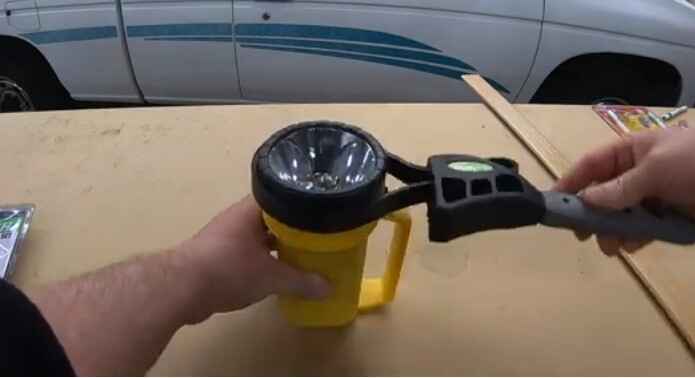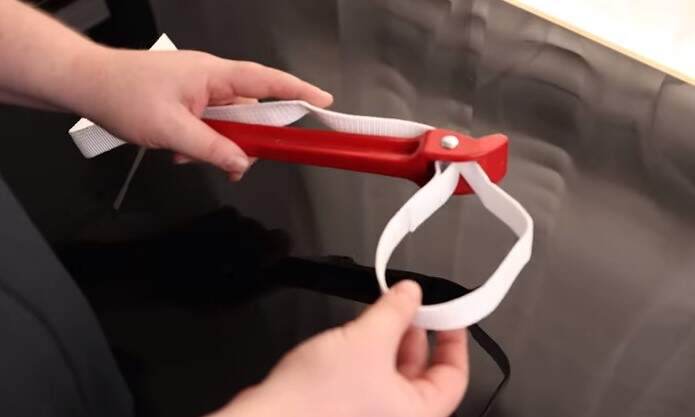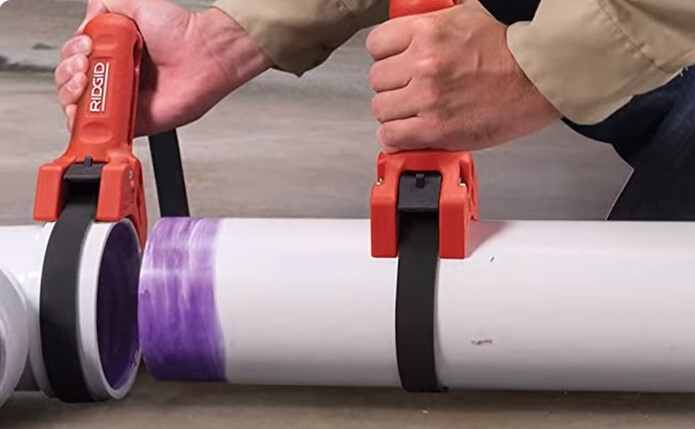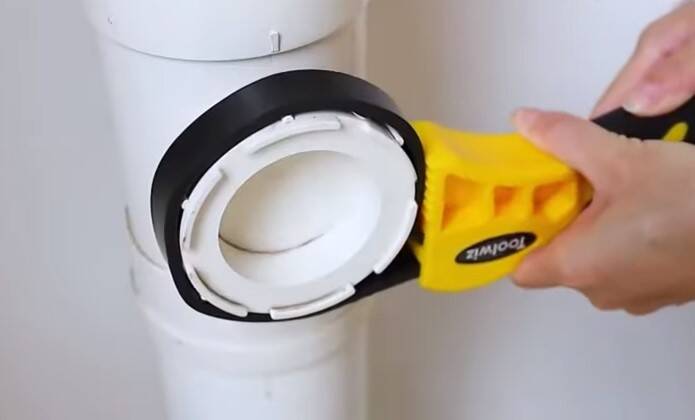To use a strap wrench, wrap the strap around the object tightly. Ensure the handle is on the side opposite the direction you want to turn. Hold the handle and twist to loosen or tighten the object securely. Easy and effective!
Embarking on a DIY project? Meet your new best friend: the strap wrench! Whether you're tackling plumbing fixes or loosening stubborn jar lids, this versatile tool is a game-changer. As a fellow beginner, I understand the initial confusion. Fear not! In this guide, I'll walk you through the ins and outs of using a strap wrench—making those once-daunting tasks a breeze. Say goodbye to slipping grips and stuck bolts; let's dive into the world of strap wrench mastery!

A strap wrench is perfect for large, rounded, or slippery surfaces. For example, the strap wrench will do the trick if you need to tighten or loosen a large bolt on a curved surface or if the object has been wet and is now slippery
What are some of the dangers of misusing a strap wrench?

A strap wrench is a handy tool for gripping and turning objects in various situations. However, misusing this tool can pose some serious dangers to the user. One must be aware of the risks associated with strap wrenches and follow proper safety protocols to avoid these hazards.
Among the dangers associated with strap wrenches are over-tightening, which can cause damage to the object being gripped; exposure to sharp edges or moving parts of the strap wrench; and injury if you lose your grip on the strap as it spins around rapidly.
Fortunately, there are several steps that you can take to minimize these risks and safely use a strap wrench.
- First, always ensure that you are using the strap wrench on objects designed to handle, and regularly check for signs of wear or damage.
- When applying pressure to the strap wrench, keep your hands and other body parts away from sharp edges or moving parts.
- And finally, always ensure a firm grip on the strap before turning the object in question, as losing your grip can result in serious injury.
If you follow these tips and take care when using strap wrenches, you can safely enjoy this handy tool's benefits without exposing yourself to its potential hazards.
How to use a strap wrench?

A strap wrench is a versatile tool for various tasks, from tightening pipes to removing stubborn bolts. While it may seem complicated, using a strap wrench is quite simple.
Here is a step-by-step guide on how to use a strap wrench:
- Select the right size wrench for the job. There are various sizes of strap wrenches available, so select one appropriately sized for the task at hand.
- Place the wrench around the object you wish to tighten or loosen. The strap should be positioned so that it is tight against the object but not too tight that it will damage the object.
- Pull or push on the wrench's handle to tighten or loosen the object respectively. Be sure to apply steady pressure and avoid jerking motions, which could damage the object or cause the wrench to slip off.
- Once the desired level of tightness or looseness has been achieved, remove the wrench and store it safely for future use.
Following these simple steps, you can easily use a strap wrench to tackle various tasks around the home or workshop.
Learn how to use a strap wrench in the video below:
How to use an oil filter strap wrench?
Like most people, you probably need to learn how to use an oil filter strap wrench. That's perfectly OK! This guide will show you everything you need to know about using one of these nifty tools, step by step.
First things first: what is an oil filter strap wrench? It's a tool that helps you remove oil filters without damaging them. They're convenient, especially if you do your oil changes.
Now that you know what an oil filter strap wrench is let's start using one!
Step 1: Find the right size oil filter wrench for your needs. Different sizes are available, so it's important to get the right one. You can usually find oil filter wrenches at your local auto parts store.
Step 2: Place the oil filter wrench around the oil filter. Make sure that it's tight so that it doesn't slip off.
Step 3: Turn the oil filter wrench clockwise to remove the oil filter. If it's stuck, you can try turning it counterclockwise.
And that's all there is to use an oil filter strap wrench! As you can see, it's a straightforward process. Now you can change your own oil confidently, knowing that you can remove the oil filter without damaging it.
What are some tips for using a strap wrench properly?

Strap wrenches are versatile tools that can be used for many applications, from tightening and loosening large pipe fittings to adjusting the tension on car belts and chains. But to get the most out of your strap wrench, it's essential to use it properly. Here are some tips for using a strap wrench effectively and safely:
1. Start by choosing the right strap wrench for your application. There are various strap wrench styles, including those designed for use with round or flat objects.
- If you're working with a large pipe fitting or other round objects, look for a strap wrench with an adjustable strap that fits around the object.
- For flat objects such as car belts or chains, opt for a strap wrench with pivot handles to provide better leverage and control.
2. Before using your strap wrench, ensure it is properly adjusted by tightening or loosening the strap until it fits snugly around your object. This will ensure that you get a good grip and can apply even pressure when turning the strap wrench.
3. When using your strap wrench, always work in a slow and controlled manner to avoid injuring yourself or damaging the object you're working on. Angle the strap to apply consistent pressure across its length rather than just at one point.
4. If you're applying a lot of force to turn your strap wrench, make sure that you use a padded or otherwise protected surface underneath to prevent it from slipping and potentially injuring yourself.
5. Be especially careful when working with strap wrenches on delicate objects, such as car belts or timing chains, which can be damaged easily if too much pressure is applied. When in doubt, consult the manufacturer's guidelines for your strap wrench model to ensure that you're using it correctly and safely.
6. Finally, regularly inspect your strap wrench for wear and tear so that it remains safe and effective for years to come. This may include replacing worn straps or cleaning excess dirt or grease from moving parts so they can function properly.
With these tips in mind, you can use your strap wrench confidently to tackle a wide range of projects and get the most out of this versatile tool.
Final Words
Now that you know how to use a strap wrench, why not put it to the test? Get one for yourself and see how this versatile tool can make your projects easier. Whether you're working on plumbing, an engine, or another type of project, a strap wrench can give you the extra torque you need to get the job done right. With a bit of practice, you'll be using your strap wrench like a pro in no time.